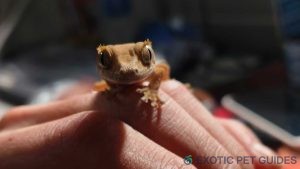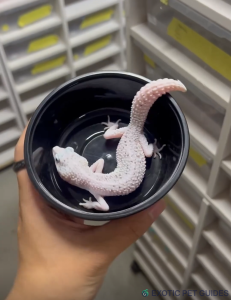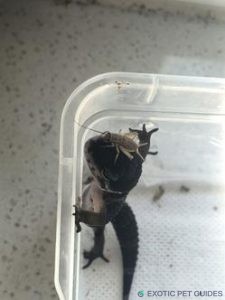Essential Tips for Long-Term Gecko Wellness
Geckos may be small, but caring for them is a big responsibility. Whether you’re raising a Leopard Gecko, Crested Gecko, or any other species, keeping your scaly friend healthy year-round requires more than just food and shelter — it means understanding their natural rhythms, nutritional needs, and environmental requirements.
In this guide, we’ll walk you through seasonal and everyday care strategies to keep your gecko thriving 365 days a year.

☀️ Spring & Summer: Active Season Maintenance
Spring and summer mimic the natural active periods for most gecko species. Here’s how to optimize care:
1. Temperature & Lighting
- Maintain ideal temperatures:
- Leopard Gecko: 75–85°F (cool side), 88–92°F (warm side)
- Crested/Gargoyle Gecko: 72–78°F
- Use a thermostat to regulate heat mats or bulbs.
- Provide low-level UVB lighting (especially beneficial for day-active species).
2. Hydration & Humidity
- Mist enclosures daily for species that require high humidity (like Crested or Gargoyle Geckos).
- Use a hygrometer to monitor:
- High humidity: 60–80% (Crested, Gargoyle)
- Low humidity: 30–40% (Leopard Gecko)
3. Feeding Frequency
- Feed 3–4 times per week during active months.
- Offer a varied diet:
- Live insects (gut-loaded and dusted)
- Commercial gecko diets (especially for Crested/Gargoyle geckos)
- Occasional fruit or treats for frugivorous species
🍁 Fall & Winter: Adjusting for Slower Seasons
Some geckos naturally reduce activity during cooler months. This is normal — and expected — but care still matters.
1. Watch for Brumation
- Leopard Geckos may enter a semi-hibernative state (brumation).
- Signs: Less appetite, less movement, hiding more
- Keep them hydrated and warm. Reduce feeding but do not cut it off entirely unless advised by a vet.
2. Temperature Checks
- Be extra mindful of nighttime drops.
- Ensure basking spots remain consistent.
3. Monitor Weight & Activity
- Keep a log of your gecko’s weight.
- Watch for excessive lethargy or weight loss — this could indicate illness, not brumation.
🥗 Nutrition Year-Round
A healthy diet is the cornerstone of your gecko’s well-being.
1. Gut-Loaded Insects
- Feed insects nutritious food 24 hours before offering them to your gecko.
2. Calcium & Vitamins
- Calcium with D3: 2–3x per week (if not using UVB)
- Multivitamin: 1x per week
- Provide a shallow calcium dish for geckos that self-regulate (like Leopard Geckos).
3. Monitor Food Intake
- Uneaten food may signal stress or illness.
- Track what your gecko eats — changes in appetite are often the first sign of a problem.
🧼 Enclosure Hygiene
Cleanliness keeps bacteria and parasites at bay.
Daily:
- Spot clean waste
- Remove uneaten insects or food
- Refill water dish
Weekly:
- Wipe down glass
- Check substrate condition
- Clean food and water bowls
Monthly:
- Deep clean tank and replace substrate
- Disinfect hides, decor, and accessories
🩺 Health Checks & Signs of Trouble
Perform Regular Checks for:
- Weight Loss
- Discolored Skin
- Swollen Limbs or Joints
- Sunken Eyes
- Abnormal Shedding
- Refusing Food
If any of these occur, consult a reptile veterinarian immediately.
🤲 Seasonal Handling Tips
- Handle gently and sparingly during winter slowdowns.
- In warmer months, build trust with short, calm handling sessions.
- Never grab the tail—many geckos can drop it when stressed (though it grows back, it’s stressful and avoidable).
📝 Final Thoughts
Your gecko’s health depends on consistent care, seasonal awareness, and close observation. With proper attention to temperature, diet, hygiene, and behavior, your gecko can live a long, happy life — some species up to 20 years!
By making care part of your daily routine and adjusting with the seasons, you’re not just keeping your gecko alive — you’re helping them thrive.

